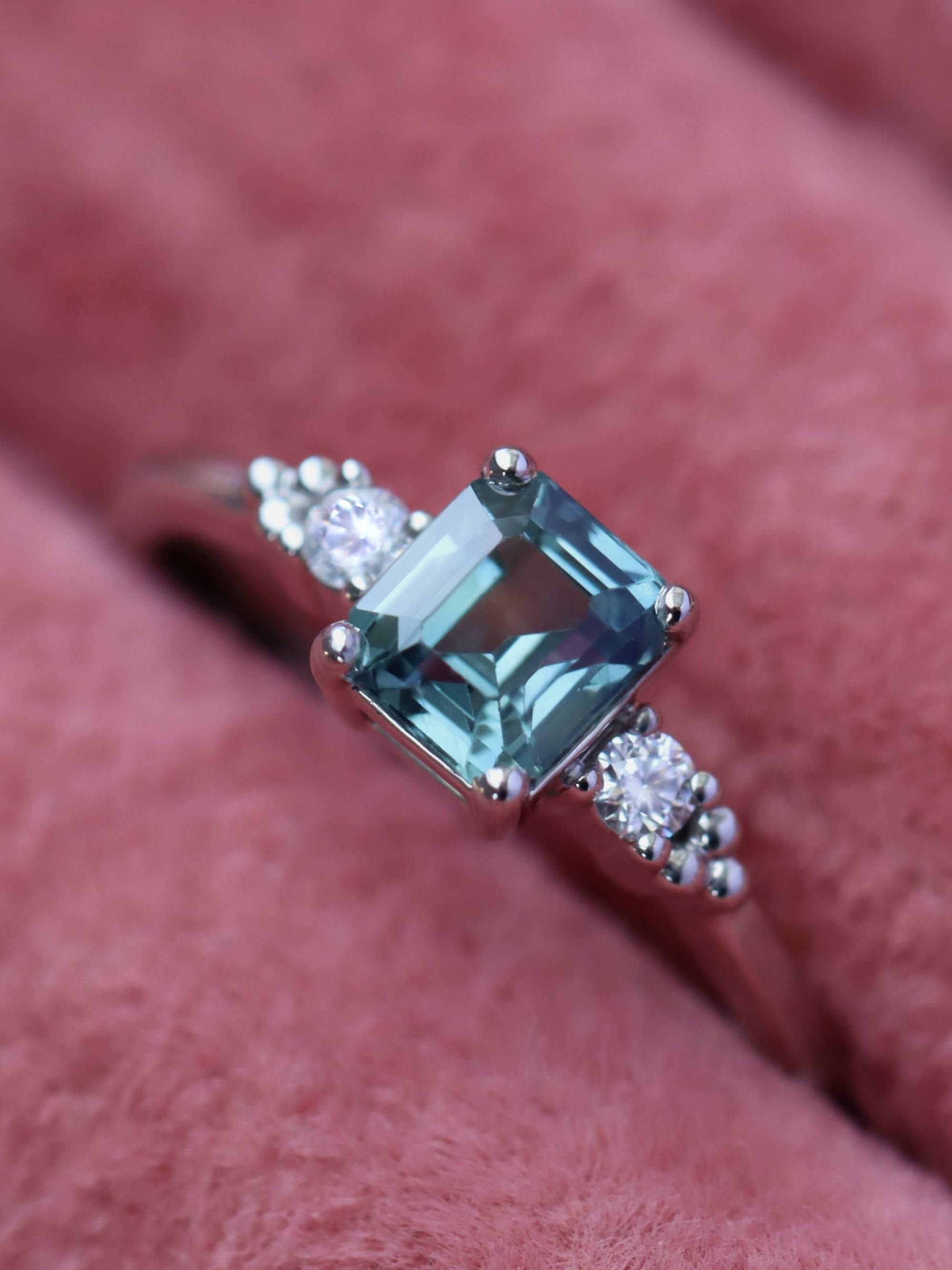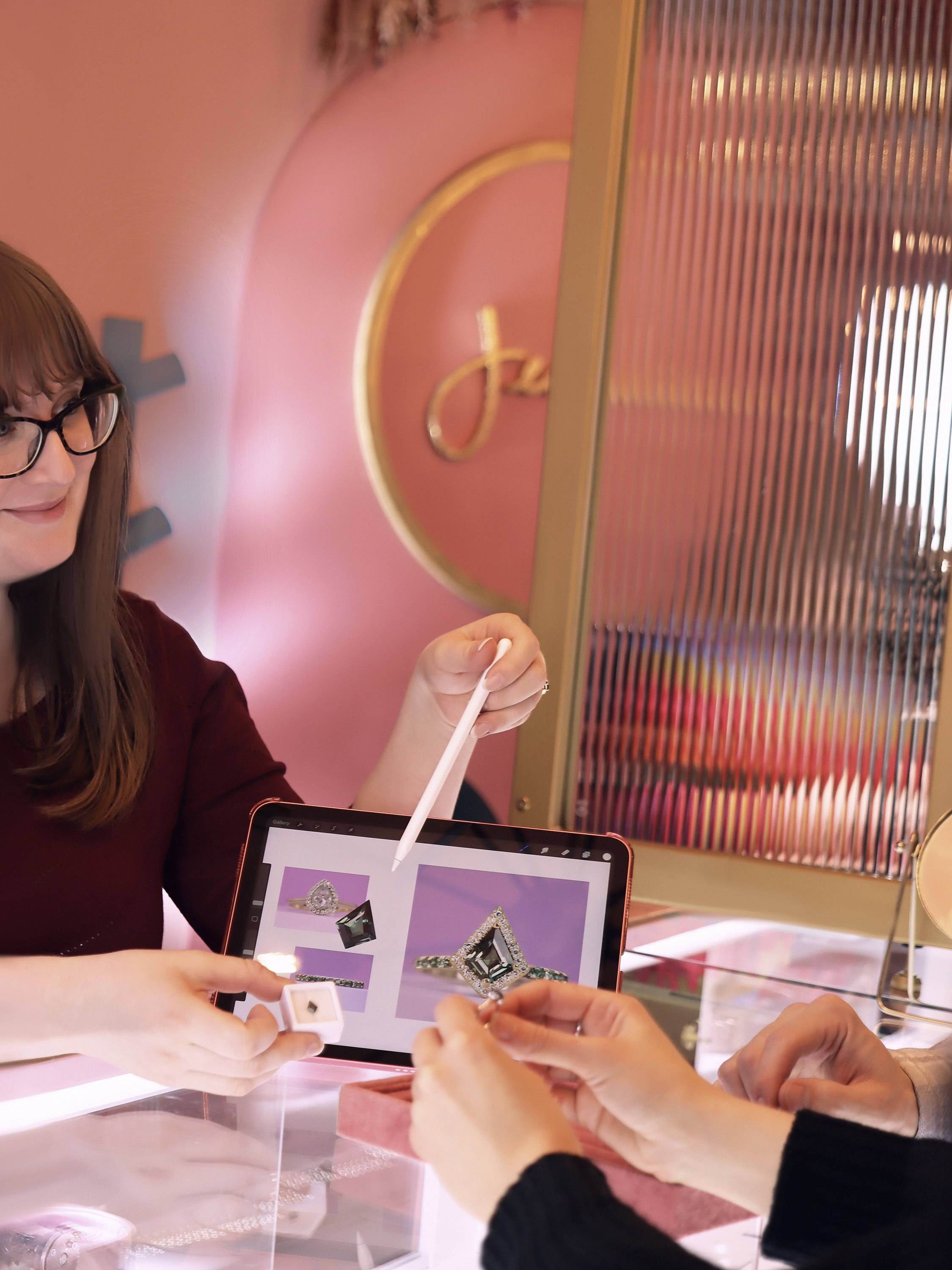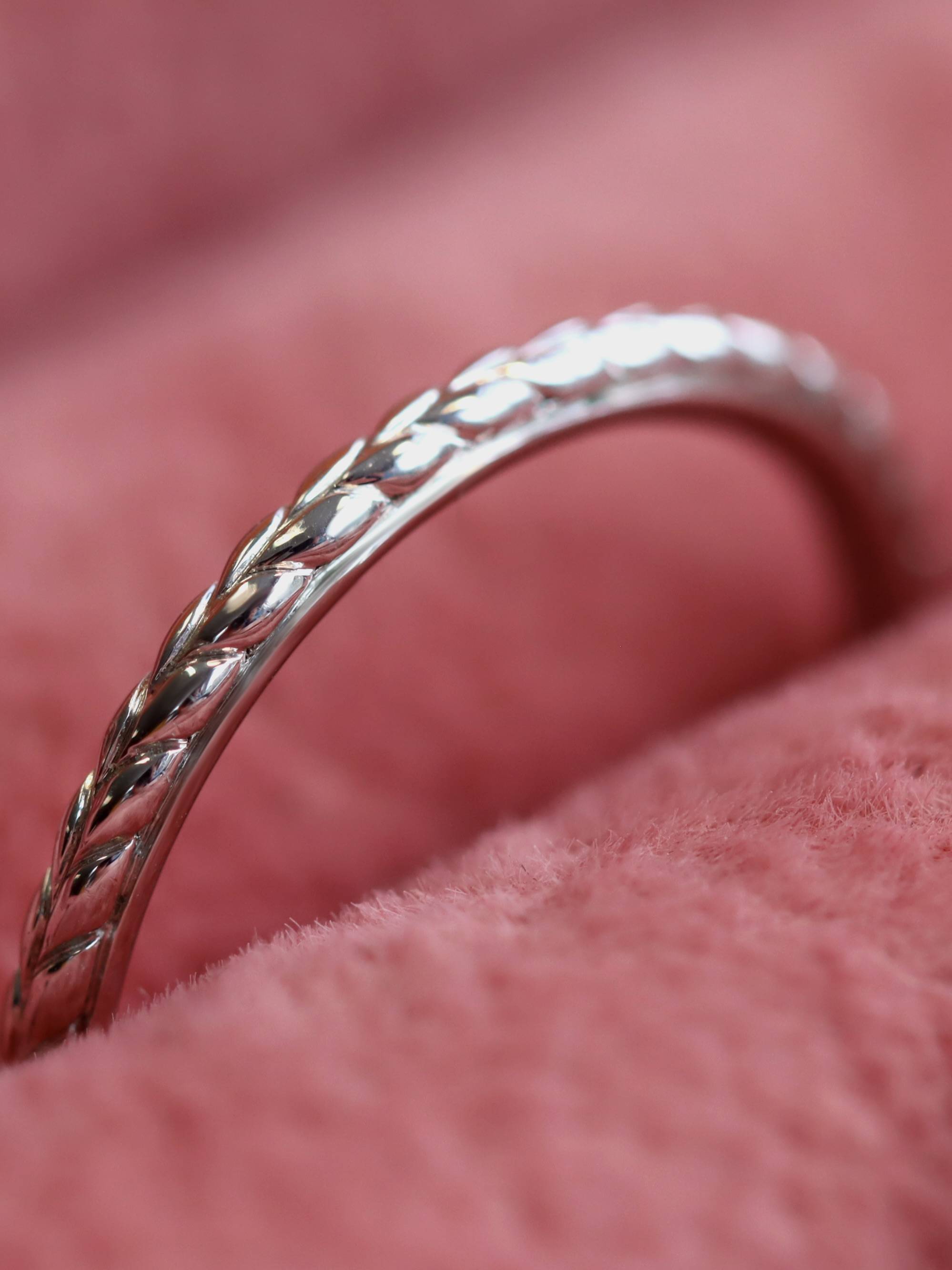RING GUIDES
White Gold Metal Guide

Join us as we explore white gold, from its uses, cost and appearance to how it's made and where it comes from. If you’re wondering whether white gold could be the perfect metal choice for you, this is your go to spot.
What is White Gold?
White gold is a type of gold that is mixed (alloyed) with other white metals to give it the silvery/white tone that it’s known for. It’s usually alloyed with metals such as silver, palladium, nickel or even platinum depending on the desired properties of the white gold. For example, white gold with a high nickel content will be more durable than white gold with a higher palladium percentage. White gold is often used in jewellery as a more cost efficient alternative to platinum, however white gold with a higher volume of yellow gold will have a faint yellowish hue.
White Gold Meaning
Due to its bright white colour, white gold holds symbolism of purity and clarity for the wearer as well as being a signifier of faithfulness and love. This makes it a popular choice for engagement and wedding rings.
White Gold History
White gold has a more recent history than other types of gold such as rose gold and yellow gold as it was first created in the early 1900s as an economical alternative to platinum, however it wasn’t until the First World War that white gold gained popularity as platinum was restricted to only be used for military tools and weapons.
Initially, white gold alloys were typically made with nickel, but due to the fact that nickel isn’t hypoallergenic many people had allergic reactions to white gold. So the composition of metals was changed so other metals such as palladium and silver were used in its place to achieve the silver/white appearance that many looked for from white gold.
In modern day, white gold continues to be a popular choice for fine jewellery and wedding and engagement rings. The quality of white gold has improved significantly, with improved alloying techniques and better quality metals being mixed with white gold, it's a great choice!
White Gold Engagement Rings

Where Does White Gold Come From and How is it Made?
White gold is not a naturally occurring material; it is a man-made alloy created by combining yellow gold with other white metals. This process involves several steps:
Gold Mining
Yellow gold is mined from deep within the earth and undergoes a process to ensure it is of the highest quality. You can learn more about the gold mining process in our yellow gold guide where we explore the origins of yellow gold in detail.
Alloying
Once the yellow gold has gone through the mining process it is then mixed with other metals such as nickel, palladium, platinum or silver, this process is known as alloying. As well as the beautiful silver tone it gives the metal, it also increases the strength and durability of the gold!
Jewellery Production
Once the white gold is formed, it’s ready to be made into beautiful jewellery pieces! At Jessica Flinn, all of our rings can be made in 9 carat, 14 carat or 18 carat white gold.
How Much Do White Gold Rings Cost?
The cost of a white gold ring depends on a number of factors such as the purity of the gold as well as the design and craftsmanship. When deciding which carat weight of white gold to go for its worth noting that the higher the carat weight, the higher the price. This is due to the fact that a higher carat weight will have a larger amount of gold which ultimately bumps the price up. For example, our Hollie design with exactly the same gemstones has a £660 difference in price between 9 carat and 18 carat white gold:


Different Types of Gold
If you’re still unsure about whether white gold is the one for you, there are two other types of gold that we work with which could be the perfect metal choice for you:
Yellow Gold
Yellow gold is the most popular gold choice, it has a warm, yellowish appearance and is known for its joyful shine. Yellow gold is made by blending pure gold with copper, silver and zinc to tone down the bright yellow colour. Gold’s chemical element is Au and is one of the densest metals, however it is quite malleable which makes it perfect for jewellery. Take a look at our collection of yellow gold wedding rings and yellow gold engagement rings for some inspiration.
Rose Gold
Rose gold has a pink, peachy hue compared to yellow and white gold and is loved for its warm appearance and durability. Due to the fact that rose gold has a lower percentage of pure gold and a higher percentage of copper (and a small percentage of silver!), it’s more sturdy than yellow gold, making it a great choice for everyday wear. Rose gold is also a great choice if you want a more unique ring as it’s still fairly uncommon for engagement and wedding rings to be set in rose gold. Take a look at our rose gold metal guide and learn more about this metal, from its uses to its history.
White Gold Pros and Cons
White gold is a great choice for jewellery but if you need some more convincing then take a look at our pros and cons list:
Durability
Due to the fact that white gold is often alloyed with metals such as nickel, it's often stronger than yellow gold, making it less prone to scratches and wear and tear.
Cost-Effective
White gold is a lot more affordable than other white metals such as platinum, and the fact that it’s also available in different carat weights means there is room for different budgets.
Appearance
Another great thing about white gold is its sleek and clean appearance. It has a lovely silver/white appearance and is a very versatile metal choice which goes with any and all styles!
How to Care for White Gold Jewellery
Caring for your white gold jewellery doesn’t have to be complicated. Here are a few steps you can follow to ensure your white gold jewellery is well cared for and maintains its shine.
Cleaning
You should give your white gold jewellery a clean every few months or so to make sure there isn't a build up of dirt and grime. To start, prepare a bowl of warm soapy water and then put your white gold jewellery in to soak for around 30 minutes. Then it's time to give it a gentle scrub using a soft bristled brush, for example a baby toothbrush. After giving it a gentle scrub you should give it a rinse and make sure all the soapy water is washed off, then pat it dry.
Chemicals
Always make sure you’re taking your white gold jewellery off any time you’re handling chemicals such as cleaning products or chlorinated water. Any harsh chemical will erode away the rhodium in white gold and the gold alloy underneath.
Storage
Make sure all your jewellery is stored separately from other pieces to avoid scratching and tangling. For example you can use separate pouches or ring boxes for each of your items of jewellery, or a jewellery stand with separate hooks for bracelets and necklaces.
Replating
White gold will need re-plating over time as the rhodium plating can rub away and reveal the yellow gold underneath. To ensure your white gold jewellery maintains its white hue you should have your pieces re-plated every 1 to 2 years.
Professional Inspections
Take your jewellery to be seen by a professional jeweller for regular inspections, a jeweller will look out for anything that needs some attention such as loose stones and worn prongs, as well as giving your jewellery a bit of TLC. You can book in for our repair and refresh service if you think your jewellery might be in need of some professional attention.
Find Your White Gold Jewellery with Jessica Flinn
At Jessica Flinn, we have a wide range of white gold rings. From engagement to wedding to eternity rings, all our gold jewellery is made with the highest quality gold. Choose from our ready to wear selection or reach out to the team to customise one of our designs, or book an appointment and begin your bespoke journey.






